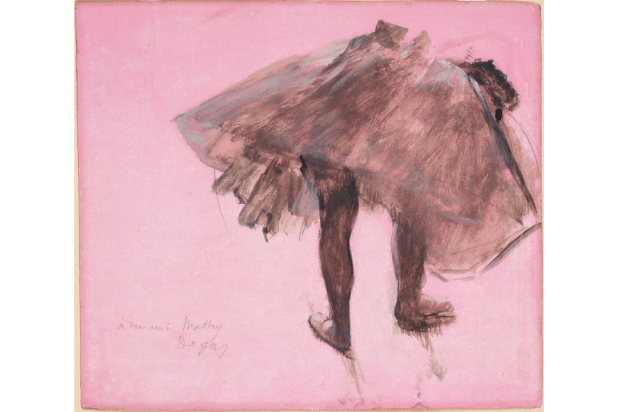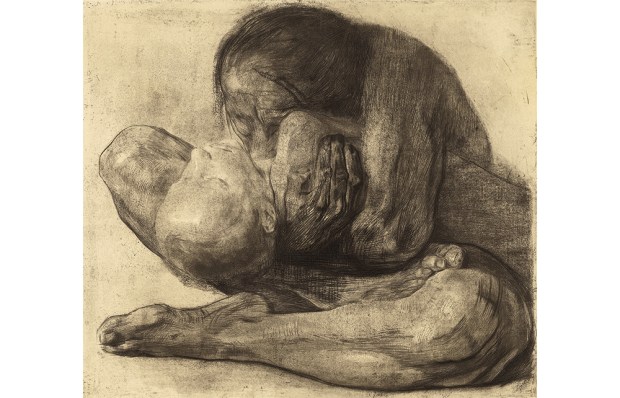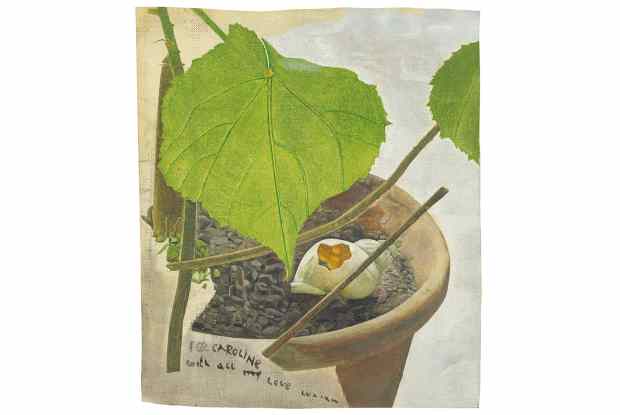What exactly are the ‘secrets of the royal bedchamber’? That the actual bed was seldom if ever slept in let alone used for romping sex (the latter took place in private bedchambers, often barred off by an ingenious system of locks). But the royal bedchamber was, as the organisers of this exhibition state, ‘the equivalent of the modern-day boardroom’, where government decisions were made and private access to the monarch gained. Those who controlled that access were the most important members of the court. They may have been awarded earldoms, but they vied for jobs that involved serving the monarch at the most intimate (and demeaning) level.
The point of the royal state bed was to emphasise the pomp and splendour of the room where you met the monarch in person. These beds are very much the star items of the show, some as high as 18ft and bedecked with the most expensive silk hangings: those on Queen Anne’s bed cost £674, the price of a reasonably large townhouse in 1714. Sometimes it was associations that mattered: on display is Mary of Modena’s bed, in which James II’s unfortunate consort reputedly gave birth in 1688 to a son in full view of a host of ministers and courtiers. For all her pains, rumours abounded that someone else’s baby had been smuggled through in a warming pan. After languishing at Chicksands Priory, Bedfordshire, for more than two centuries, the bed underwent so many alterations that the embroidered crowns and JM (James and Mary) monograms are about the only authentic features left. The exhibition also includes a highly practical travelling bed made in 1716 for the Prince of Wales, later George II. The bed is made up of 54 pieces and retains its original mattresses, webbing and much of the original hangings. (Some explanation as to how it was assembled would perhaps have been more to the point than those somewhat distracting sight and sound effects used to convey the sensations of travel.)
Perhaps the grand finale of state beds on display was one made in 1772 for Queen Charlotte. It was embroidered with botanically accurate representations of flowers by Phoebe Wright’s School for Orphaned Women, a charitable institution dear to the Queen’s heart. You can examine the skill of such work on an embroidered cushion placed close to the viewers’ barrier. But by then, the bedchamber was no longer the centre of government and the state bed had lost many of its regal connotations.
Other items include William III’s outer vest, close-stool and alarm watch by Daniel Quare, which helped the court run on time. You can also see John Webb’s elevation of the ‘King’s Bedchamber at Greenwich’, dated 1665, one of the earliest English surviving interior designs, and decorated with palm-tree motifs in the manner of King Solomon’s temple. There are lively portraits of servants, such as Bridget Holmes, ‘necessary woman’ (or the equivalent of housekeeper) to four monarchs, and William Chiffinch, Charles II’s Page of the Bedchamber, whose unofficial duties earned him the title of ‘Pimp Master General’. One of the most interesting items is a richly carved bed-rail, which would have separated the King of France’s bed from the rest of the bedchamber. This feature was introduced to England by Queen Henrietta Maria, and scientific tests on the bed-rail now date the wood to the 1630s.
This is a delightful and highly informative exhibition, which comes as part of the visitor package without any special entrance fee. One only regrets that a publication did not come with all the research that went into it.
Got something to add? Join the discussion and comment below.
Get 10 issues for just $10
Subscribe to The Spectator Australia today for the next 10 magazine issues, plus full online access, for just $10.
You might disagree with half of it, but you’ll enjoy reading all of it. Try your first month for free, then just $2 a week for the remainder of your first year.













Comments
Don't miss out
Join the conversation with other Spectator Australia readers. Subscribe to leave a comment.
SUBSCRIBEAlready a subscriber? Log in